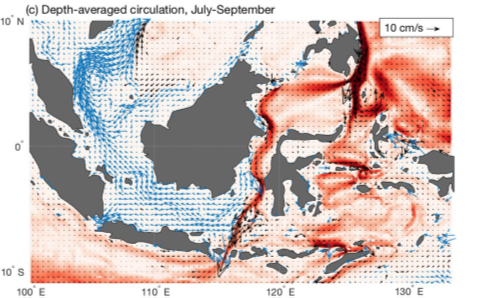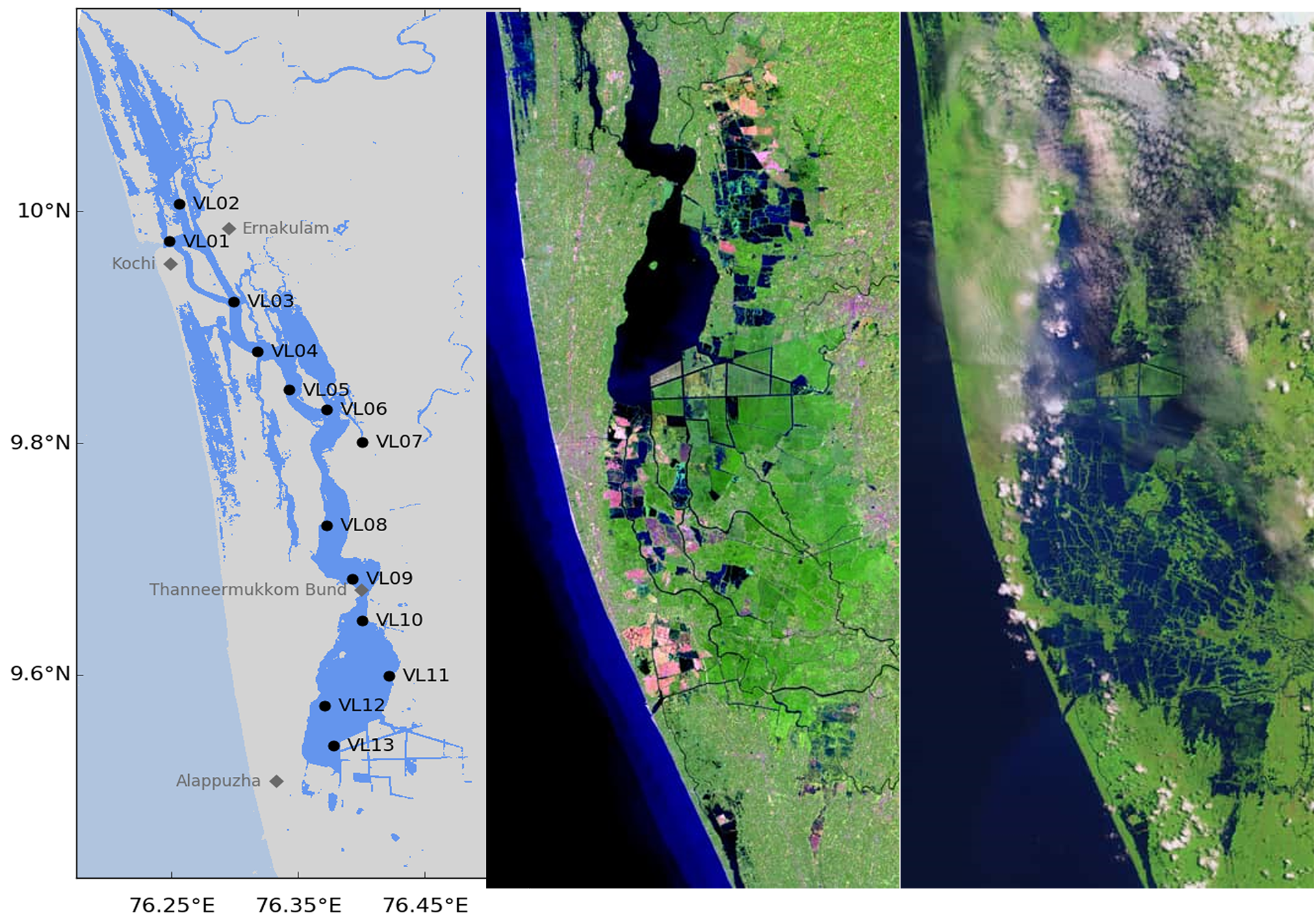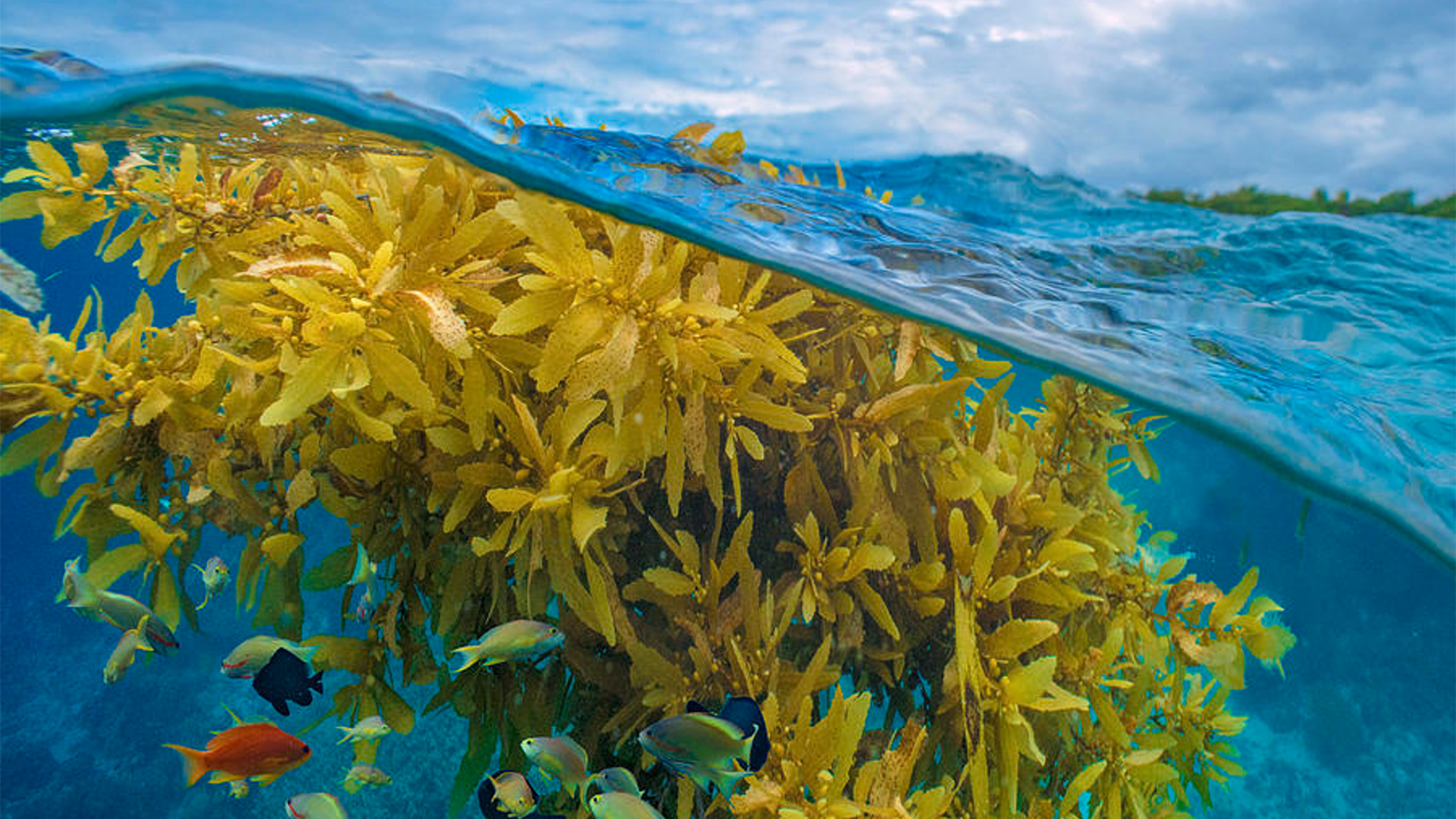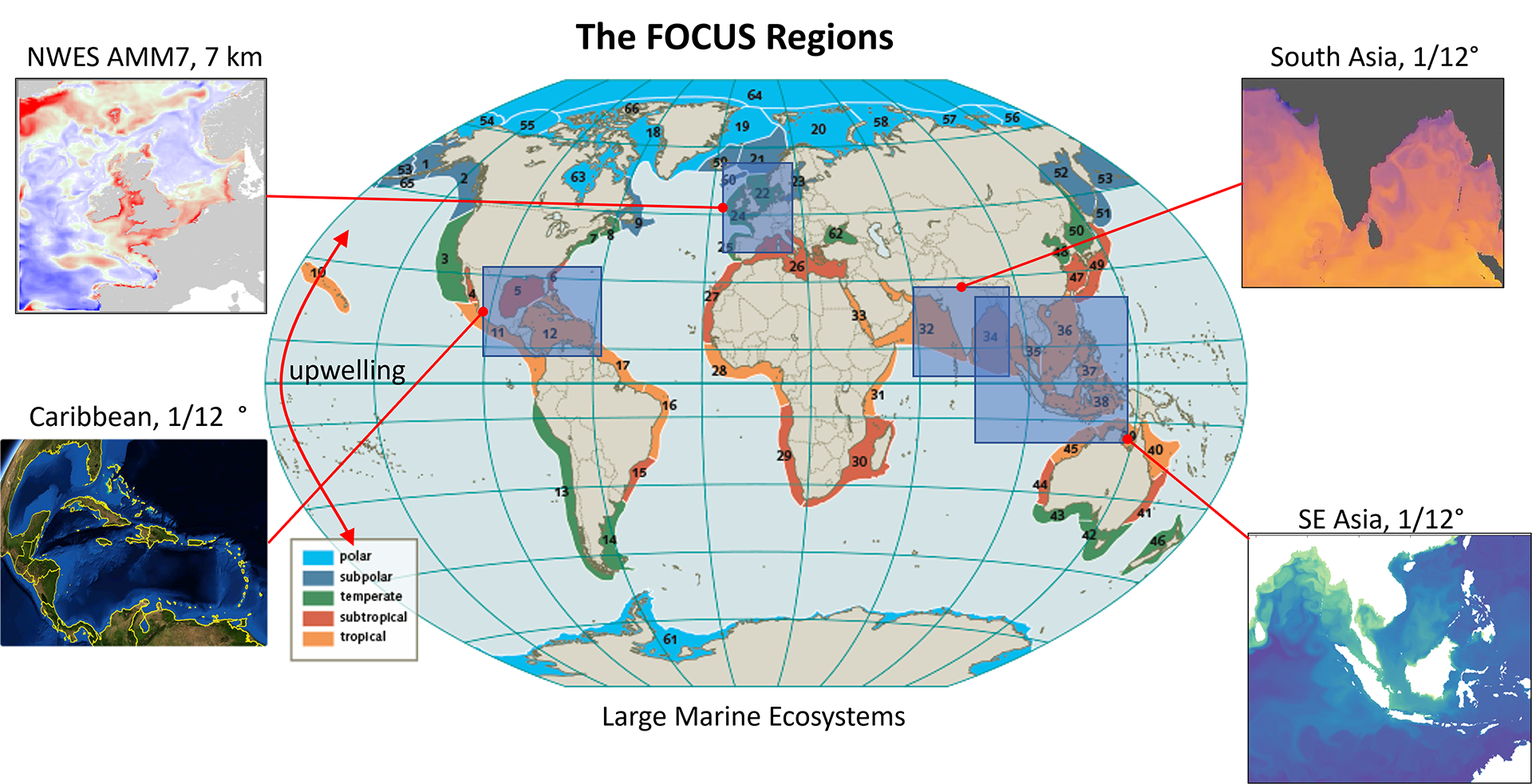What is the global coastal ocean?
The coastal ocean connecting the land and the open ocean is a region of immense societal, ecological and Earth System’s importance that is under unprecedented pressure from global climate and demographic change. The global coastal ocean is changing rapidly, both in terms of its environment and the vulnerability of adjacent coastal populations and infrastructure.
Why study it?
Global heating drives changes to temperature, stratification, circulation and oxygen content (alongside many other physicochemical properties). Increased dissolved inorganic carbon and hence ocean acidification (another consequence of increased atmospheric CO2) impacts widely on marine ecology and ecosystem services.
Sea level rise is a robust outcome of anthropogenic climate change; global sea level has already risen by 20cm (1901–2018) and projected to rise by a further 28–101cm by 2100. Climate change impacts on extreme storms are less certain, however, the frequency of extreme storm surge events increases disproportionately with mean sea level rise. Human population is projected to rise to over 10 billion by 2100, with much of this growth concentrated in coastal mega-cities. Without careful adaptation measures this represents a substantial increase in vulnerability to coastal hazards. This population growth in turns grows the demand for marine resources and increases the potential for land-based pollution impacting the coastal ocean. For example, ~50% of human food production requires nitrogen-based fertilizer and ~50% of this ends up in the marine environment, leading to coastal eutrophication and hypoxia. Globally, almost 50% of coastal regions and marine protected areas are heavily impacted by human activities. Cities themselves are increasingly directly impinging on neighbouring coastal environments, and we now need to consider the urban ocean.
Understanding, predicting and developing solutions for these multiple impacts in the highly heterogenous coastal ocean environment is a substantial scientific challenge of global importance. It is projected that by 2030 the global marine and maritime economy will be worth $3 trillion. For example, about 80% of all tourism takes place in coastal areas and over 90% of fish catches come from the coastal ocean; ~950 million people rely on fisheries and mariculture for their main source of animal protein.
Coastal flooding impacts lives, livelihoods, food production and infrastructure; more than 600 million people live at less than 10m above sea level and it is projected that by 2100 between 176–287 million people may be exposed to episodic coastal flooding.
While coastal oceans are under immense pressure, they also provide part of the solution to managing and adapting to future change. Natural coastal habitats are regions of great biodiversity that can provide effective protection from coastal flooding (e.g. mangroves and salt marshes), sequester substantial quantities of carbon and mitigate land-based pollution. Below the seafloor, geological structures provide a resource for storing captured CO2 to mitigate emissions during the energy transition away from fossil fuels.
What will FOCUS do?
In FOCUS we will bring to bear the full range of oceanographic tools to address the pressing challenges of the global coastal ocean. These tools include numerical models, satellite remote sensing, field surveys and laboratory work. Extensively we will reanalyse existing data from around the world in novel and innovative ways and we will engage with scientists from many regions (such as South and South East Asia and the Caribbean), to build on existing knowledge, in a spirit of mutual respect and transparency, freely sharing methods and data.
Work Packages
Svetlana Jevrejeva and Jason Holt (NOC)
Helen Findlay and Yuri Artioli (PML)
- Variability and predictability of climate hazards and stressors
- Climatic Drivers of variability in Hazards and Stressors

Climatic changes in marine temperature, circulation and acidity impact on marine ecosystems and their ability to provide ‘ecosystem services’ such food from fisheries and drawing down CO2 from the atmosphere. Sea level rise and increases in storminess hugely increase the risk of coastal flooding. How these climate impacts act together and relate to changes to episodic events (such as storms) is a major knowledge gap.
Anna Lichtschlag and Claire Evans (NOC)
Tim Smyth and Shubha Sathyendranth (PML)
- Identifying anthropogenic stressors, their spatial extent and temporal variability
- Quantifying the impacts and consequences of combined stressors

Substantially rising human activity in the coastal zone (e.g. in growing megacities) leads to increased risk of pollution and degradation to marine environments without careful management. Many aspects, such as nutrient pollution from agriculture and sewage, have been investigated for years, but others are newly emerging, e.g. the impacts of mining waste, pollution from shipping and artificial light at night. How these multiple direct human impacts act together is largely unknown.
Claire Evans and Ismael Falcon Suarez (NOC)
Ana Queiros and Olivia Rendon (PML)
- Optimising temperate and tropical Blue Carbon CO2 removal potential
- Engineering Solutions to net-zero carbon
- Carbon Capture and Storage
- Enhanced Weathering
- Understanding complexities of supply and demand of Blue Carbon CO2 mechanisms

Coastal habitats, such as seagrasses, mangroves and seaweeds have the potential to draw down substantial amounts of CO2 and help stall climate change, but only if they are healthy ecosystems. Hence, understanding how the protection and restoration of these environments can improve CO2 drawdown is an important aspect in fighting climate change.
Jo Hopkins and Katya Popova (NOC)
Shubha Sathyendranth and Jerry Blackford (PML)
- Global coastal ocean typologies and climate change exposure indices
- Assessing marine food security risk in the global tropics
- Assessing carbon cycling and blue carbon storage resilience

To address the challenges in the coastal ocean on a global scale requires new approaches to translating understanding from one region to another – particularly from data rich to data sparse areas. This involves developing approaches to classify the global coastal ocean, based on our understanding of oceanographic processes, and to develop ways to capture and compare the exposure of climate change risk of different sea areas. Social information can be added to this to create a whole-system view, for example, from climate to ecosystems to fisheries and to people.